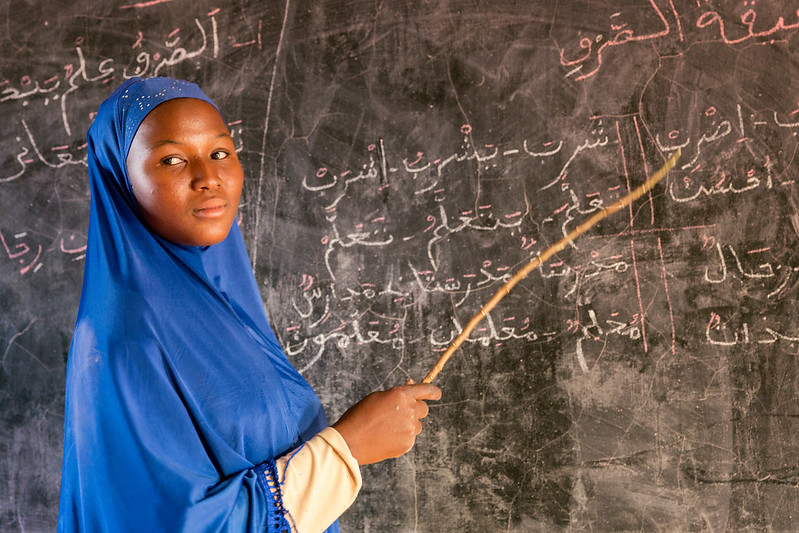The Development of Female Education in the MENA Region

By: Yaara Aleissa / Arab America Contributing Writer
What keeps students out of school?
Education is a gift of privilege. In the Western world, this gift can easily be forgotten. Especially, when it has always been accessible at a young age. The system of education in the West is not perfect. However, it has been prioritized. Mandating that each child must get an education in their primary years of development (age 6 to 16).
A comparison of the West to the MENA region highlights stark differences such as social and economic stability. Both, are key factors in determining a child in the MENA region’s ability to attend school.
For some families having their child go to school comes at too expensive a cost. One of the most cited reasons why children in the MENA region are not in school is due to economic hardships. Thus, requiring the child to become a caretaker for the family, providing a source of income.
On an individual level, there is a lot on the line for families whose main priority is keeping their children alive and healthy. Therefore, it requires government administrations to invoke policies and programs that prioritize the education of young adolescents. While ensuring that low-income families and rural populations are also included.
How does female education compare?
The factors impacting a student’s access to education included economy and social stability. Interestingly enough, these are the two factors that increase a government’s performance when they prioritize students’ education.
According to the Population Reference Bureau, 19 developing countries, that included Egypt, Jordan, and Tunisia, found that their country’s long-term economic growth increased by 3.7 percent each year as the average schooling of the adult population increased.
A study of 19 developing countries, including Egypt, Jordan, and Tunisia, concluded that a country’s long-term economic growth increases by 3.7 percent for each year that the adult population’s average level of schooling increases.
However, even as MENA regions develop their education systems they leave behind their young girls putting them second on the priority list.
When mothers were asked to decide between sending their son or daughter to school if their financial situation only allowed one child to go to school 53 percent of the women said that the decision should depend on the children’s capabilities. 39 percent said that the son should go to the university. With only 8 percent saying that the daughter should go.
View of female education in MENA regions
Adolescent girls are 1.5 times more likely than boys to be out of school. With one in five being married before the age of 18. In addition, their illiteracy rates are far lower than their male counterparts. Thus, stacking much against them in the possible future in the workforce.
However, the main concern becomes the gender stereotypes for a woman in the middle east. The female is the caretaker and the male is the breadwinner. But, the lack of a proper education makes it far more difficult for a woman, or in some cases a young girl, to begin to take on the responsibilities of being a wife and a mother.
The greatest leap in women’s education in the MENA region came in the mid-20th century allowing girls and boys to have equal access to education. Still, many of the conservative views of gender in the MENA region did not change overnight.
Even now, as there has been an emergence in the presence of girls in school the stark gender disparities in the workforce reflect otherwise. In the region, only 19.77 percent of women participate in the workforce.
When female education suffers, the country suffers
In the mid-1950s the term “brain drain” was coined. In response to the social and professional impact of British medical graduates leaving the country to seek opportunities in North America.
Today, this term has been used to depict how gender is viewed in the MENA region. As a result of the deprioritization of female education. There’s a “gendered brain drain” and it’s impacting the economy of many MENA countries.
Reaching a point where women have access to receive secondary education and pursue higher education is remarkable. Yet, the bar doesn’t stop there. When Arab women don’t fit into the workforce of their home country they are no longer settling but rather finding a place where their efforts are valued. Leading to the feminization of migration flowing out of MENA.
Initiatives such as Education For Employment in Palestine are working to ensure that their students graduate with job security. Especially, their female students. Training them for self-employment with the knowledge that job opportunity is scarce. These programs challenge gender stereotypes. Enhancing women’s employment in male-dominated fields. While also promoting parental responsibility for fathers.
Conclusion
Education is not determined by gender. Nor should it be determined by economic or social status. It is a basic right that all individuals should have access to. If countries are not looking at the individual benefits education has lower mortality rates, increased earning capacities, and more self-aware citizens with the ability to advocate for themselves. Then instead they can think of the capital benefits in the country’s economy. Either way, pressure for governments to intervene is not just necessary, it’s mandatory.
Check out Arab America’s blog here!









